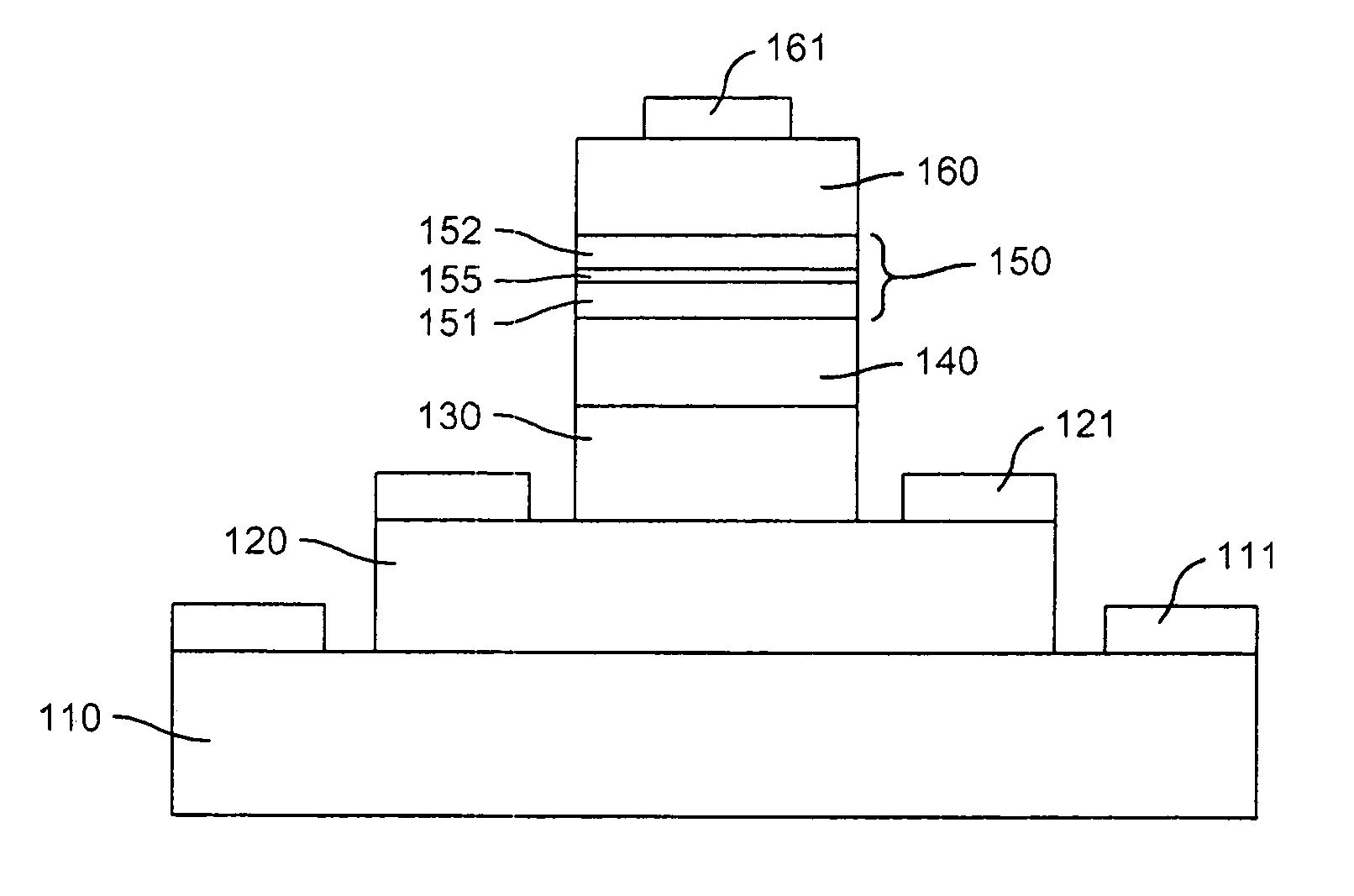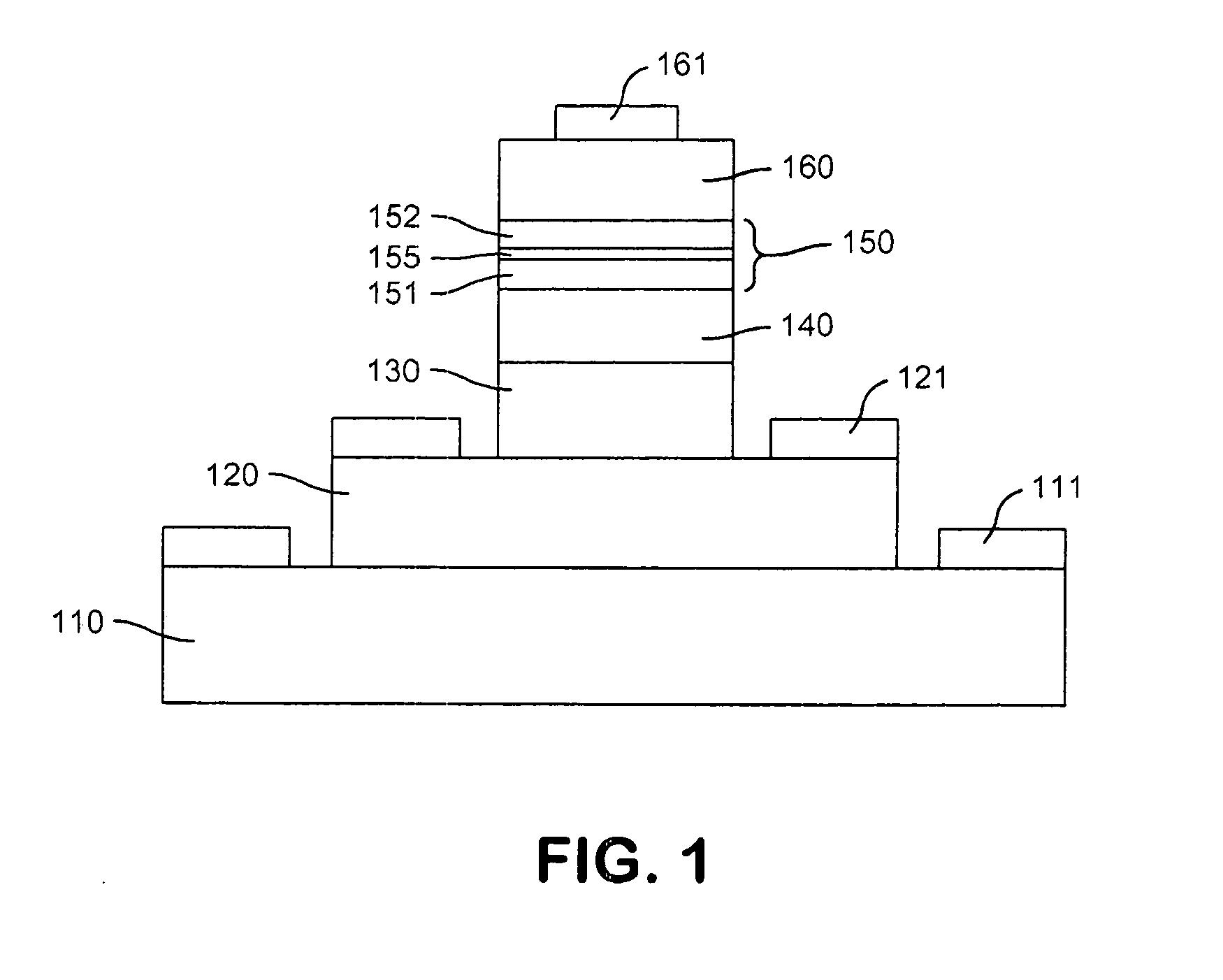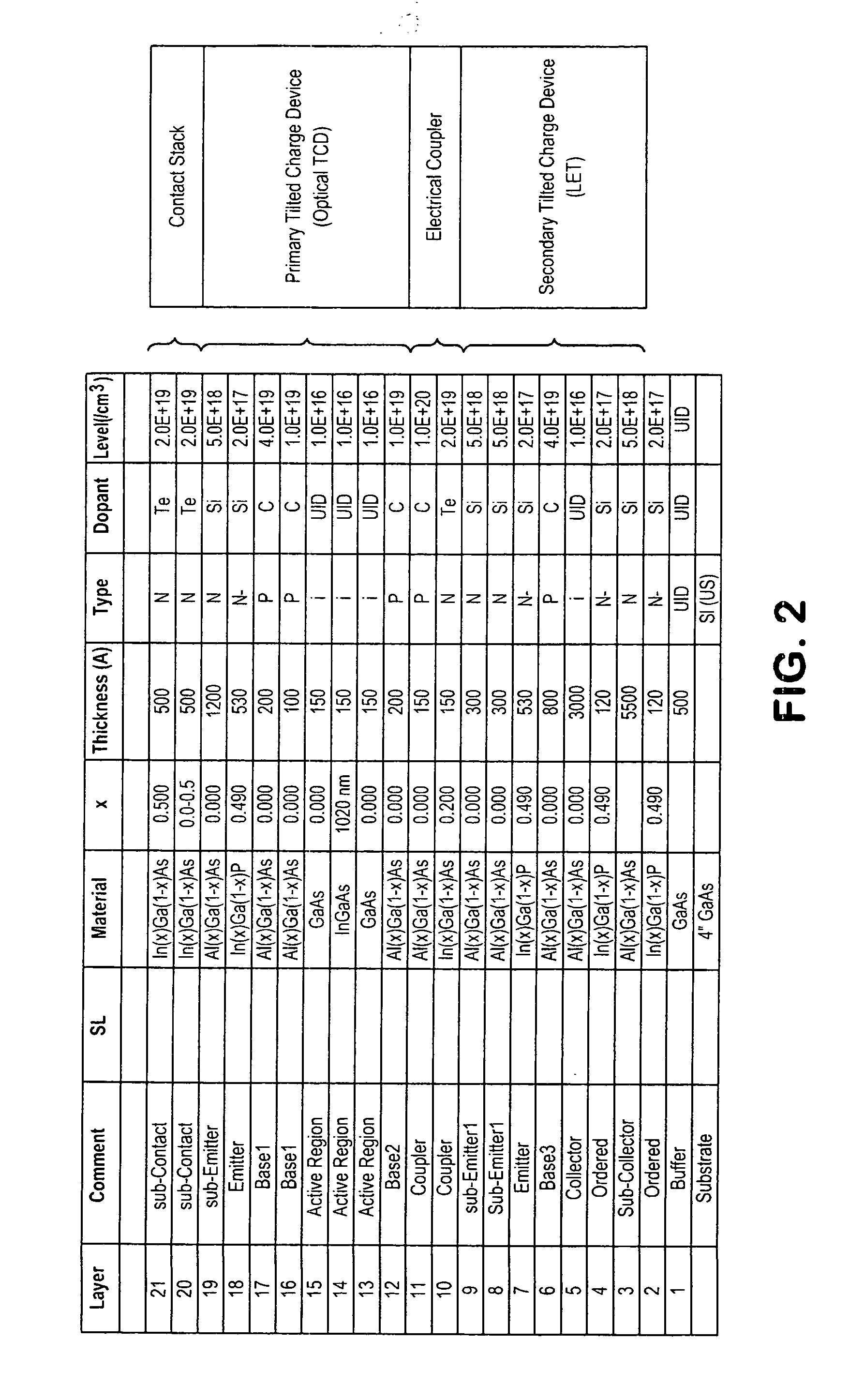Optical Tilted Charge Devices And Techniques
a charge device and optical technology, applied in the direction of electric light circuit arrangement, basic electric elements, electric apparatus, etc., can solve the problems of low electrical input impedance, low electrical gain (lc/lb), and low efficiency of driving
- Summary
- Abstract
- Description
- Claims
- Application Information
AI Technical Summary
Benefits of technology
Problems solved by technology
Method used
Image
Examples
Embodiment Construction
[0022]Referring to FIG. 1, there is shown a simplified cross-section of a device in accordance with an embodiment of the invention, and which can be used in practicing an embodiment of a method in accordance with the invention. The semiconductor layer structure of an example of this embodiment is shown in the table of FIG. 2. A collector region 110 has a base region 120 disposed as a mesa thereon, and an emitter region 130 is disposed as a mesa on the base region 120. A collector terminal 111 and a base terminal 121 are respectively coupled with the collector 110 and the base 120. The described collector 110, base 120, and emitter 130 of the present example are set forth in further detail in the layer table of FIG. 2, which lists a GaAs substrate and a GaAs buffer layer (1) on which the described collector 110, base 120, and emitter 130 are deposited, with the listed intervening layers and auxiliary layers. The resultant device operates as a heterojunction bipolar transistor (HBT), ...
PUM
 Login to View More
Login to View More Abstract
Description
Claims
Application Information
 Login to View More
Login to View More - R&D
- Intellectual Property
- Life Sciences
- Materials
- Tech Scout
- Unparalleled Data Quality
- Higher Quality Content
- 60% Fewer Hallucinations
Browse by: Latest US Patents, China's latest patents, Technical Efficacy Thesaurus, Application Domain, Technology Topic, Popular Technical Reports.
© 2025 PatSnap. All rights reserved.Legal|Privacy policy|Modern Slavery Act Transparency Statement|Sitemap|About US| Contact US: help@patsnap.com



